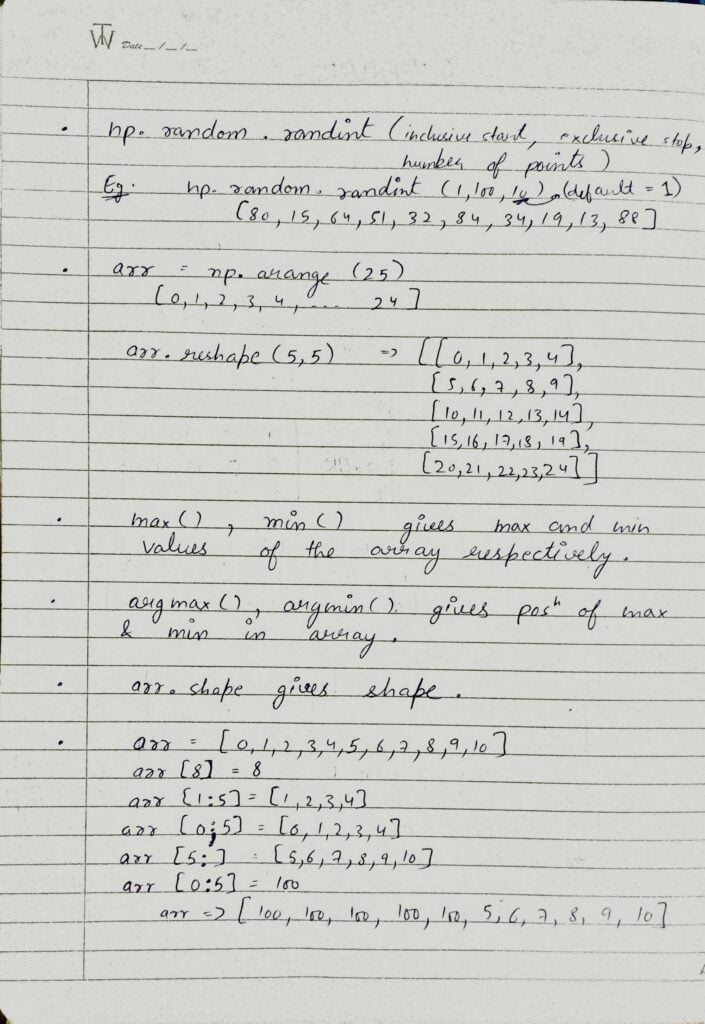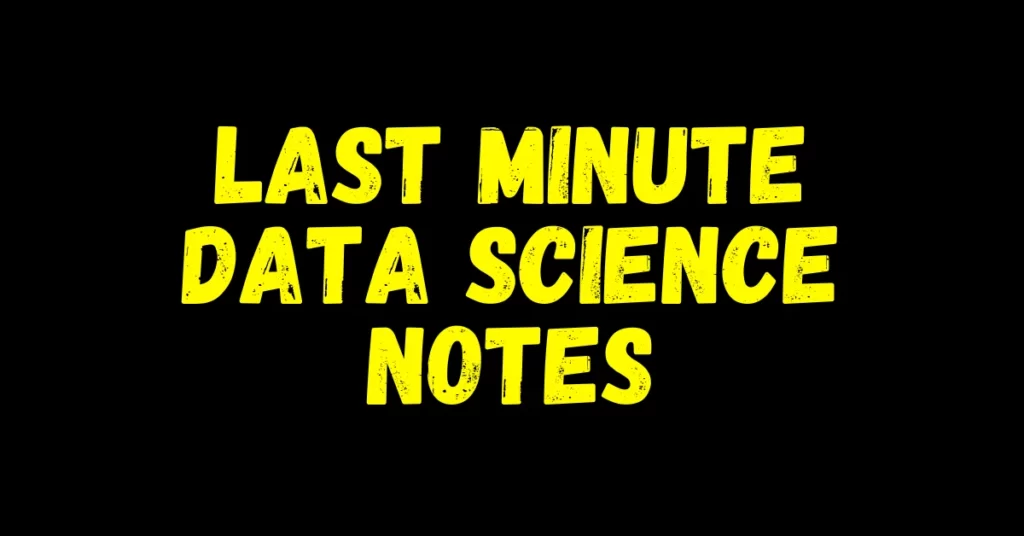Handwritten Data Science Notes
Hey guys, here you can find Handwritten Data Science Notes with proper explanations to help you throughout your Data Science journey.
It is always good to have a practical insight into any technology that you are working on. Though textbooks and other study materials will provide you with all the knowledge that you need to know about any technology but you can’t really master that technology until and unless you work on real-time projects.
Must Checkout Handwritten Data Science Notes


- Pandas – Last-minute Notes – Handwritten Notes – crash course – 2022
- Matplotlib – Last-minute Notes – Handwritten Notes – crash course – 2022
- Seaborn – Last-minute Notes – Handwritten Notes – crash course – 2022
- Linear Regression – Last-minute Notes – Handwritten Notes – crash course – 2022
- Last Minute Data Science Notes – 2022
- BIAS VARIANCE TRADEOFF – LAST-MINUTE NOTES – HANDWRITTEN NOTES – CRASH COURSE – 2021
- Logistic Regression – Last-minute Notes – Handwritten Notes – crash course – 2022
- K-Nearest Neighbors (KNN)- Last-minute Notes – Handwritten Notes – crash course – 2022
- Decision Trees – Last-minute Notes – Handwritten Notes – crash course – 2022
- KMeans – Last-minute Notes – Handwritten Notes – crash course – 2022
- Principal Component Analysis (PCA) – Last-minute Notes – Handwritten Notes – crash course – 2022
- Support Vector Machines – Last-minute Notes – Handwritten Notes – crash course – 2022
Introduction to Data Science
Data science is a multidisciplinary field that combines statistical analysis, machine learning, and domain expertise to extract insights and knowledge from data.
Importance of Data
Data is the foundation of data science. It can be structured or unstructured and comes in various forms such as text, images, videos, and numerical values.
Data Collection
Collecting data involves gathering relevant information from various sources such as databases, APIs, sensors, and surveys.
Data Preprocessing
Before analysis, data must be cleaned and preprocessed to handle missing values, outliers, and inconsistencies.
Exploratory Data Analysis (EDA)
EDA involves visualizing and summarizing data to understand its distribution, relationships, and patterns.
Statistical Analysis
Statistical methods such as hypothesis testing and regression analysis are used to infer insights from data.
Machine Learning
Machine learning algorithms are employed to build predictive models and make data-driven decisions.
Supervised Learning
Supervised learning algorithms learn patterns from labeled data to make predictions on new unseen data.
Unsupervised Learning
Unsupervised learning algorithms identify hidden patterns and structures in unlabeled data.
Feature Engineering
Feature engineering involves selecting, transforming, and creating new features to improve model performance.
Model Evaluation
Models are evaluated using metrics such as accuracy, precision, recall, and F1-score to assess their performance.
Model Deployment
Deploying models involves integrating them into production systems for real-world applications.
Ethics in Data Science
Ethical considerations such as privacy, bias, and fairness must be addressed throughout the data science lifecycle.
Career Opportunities
Data science offers diverse career opportunities such as data scientist, data analyst, machine learning engineer, and business analyst.
Continuous Learning
Continuous learning is essential in data science due to the rapid advancements in technology and methodologies.
Also do check out my other Machine Learning projects, Deep Learning projects, Computer Vision projects, Flask projects, NLP projects at machinelearningprojects.net.












